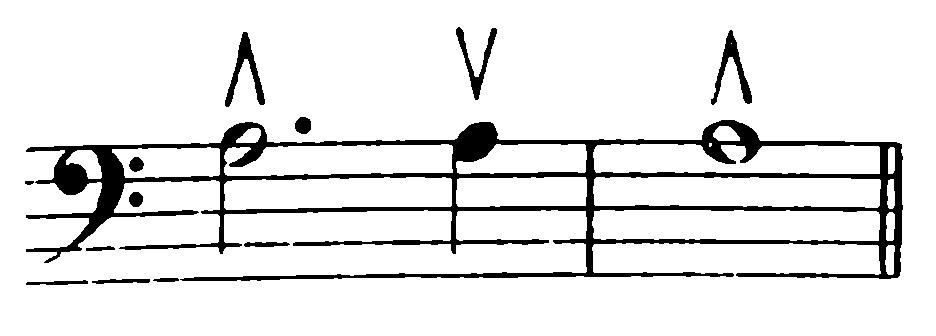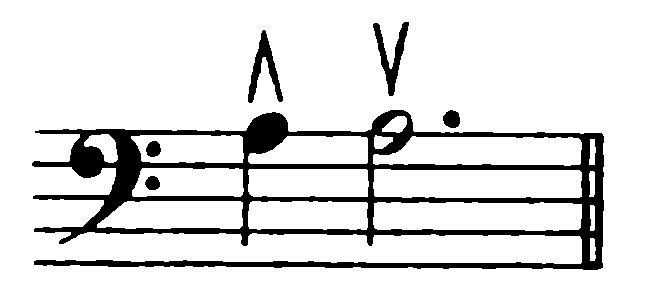Bow Speed
If all notes are of the same duration, as in the previous exercises and examples, then the movements of the bow–whether using the full bow, half the bow, or a short bowstroke–will be the same. But if there are notes of unequal duration, or alternating long and short strokes, one will often run into trouble if the bow is guided at the same speed. In the following two-measure example, the third note, which lasts a full measure, would require the whole length of the bow. The second note, however, brings the bow at most to the middle, since as it is a quarter note it is played with a short up-bow stroke.


In this example, the first note could begin at the tip of the bow, otherwise the first stroke would go at most to the middle of the bow. In order to bring the bow to the desired place (in the first example to the frog, in the second to the tip), it has to be pulled faster. In some cases, notes of shorter duration must be played with a long bowstroke by pulling it faster. We say in some cases, because in a sequence of long and short notes the latter do not always require a faster bow. In the next example, the fourth note also requires the entire length of the bow and must begin at the tip; the bow is already close to the tip since the two short notes are executed beforehand with a short or half-bow stroke at the tip.

If we wanted to make a rule in all these cases, it would have to be as follows: if an odd number of short note values precedes a long note value, the last of the short note values must be played with a faster bow.
The following exercises contain the most common combinations of notes of unequal duration. The notes that require faster bowing are marked with an “NB”1 at the top; the player will be able to best convince himself of the correctness of the given rules. The exercises are written for the A- and C-strings, but should also be studied on the D- and G-strings. The long notes (half note, dotted half note) should be practiced at first with the whole bow, the quarter notes with half the bow. The player should then study the same exercises, playing the half notes with half bows and the quarter notes with short bowstrokes. First, draw the half-bow from the frog to the middle (with the quarter notes alternately at the frog and in the middle). Then, draw a half-bow from the middle of the bow to the tip (with the quarter notes alternately at the middle and at the tip). The eighth notes are always played with short bowstrokes, either at the frog, near the tip, or in the middle.






Example on an open string

Example in first position



-
“Nota bene” (“note well”). ↩